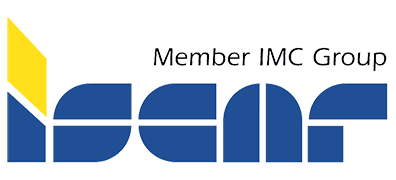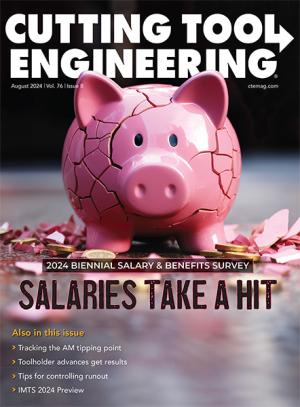No matter how good the tool, it won’t cut to the satisfaction of the user if it’s not held properly. That’s why a good deal of time and money are spent on the development of toolholding technology. Not surprisingly, a major focus of these efforts is on improving toolholder grip. But toolholder manufacturers also report good progress in key areas such as better coolant delivery and faster tool changes.
Due to today’s demanding machining requirements, shops are asking for more than ever from their toolholders. That’s the word from Platinum Tooling Technologies Inc., a tool importer and distributor in Prospect Heights, Illinois. Platinum Tooling supplies accessories for a wide variety of machines. Despite the differences in their equipment, however, many customers are looking for the same things. “What we're being asked to do is to supply products that are more accurate (to minimize runout) and can run faster,” noted Preben Hansen, owner and president of Platinum Tooling.
According to Hansen, a technology that fits the bill in both areas is shrink-fit tooling. Shrink-fit “is a very accurate way of holding an endmill in a toolholder and helps with running under high-speed imbalances,” he said. “We even sell shrink-fit collets that go into live tools. It’s a technology that can be used right across the spectrum of machining.”
When it comes to accuracy, Hansen said, shrink-fit toolholders can keep runout down at around ±0.0001" even at the highest spindle speeds machines are capable of today. A major reason for that, he noted, is that, unlike competitive systems, shrink-fit is a one-piece toolholding solution.
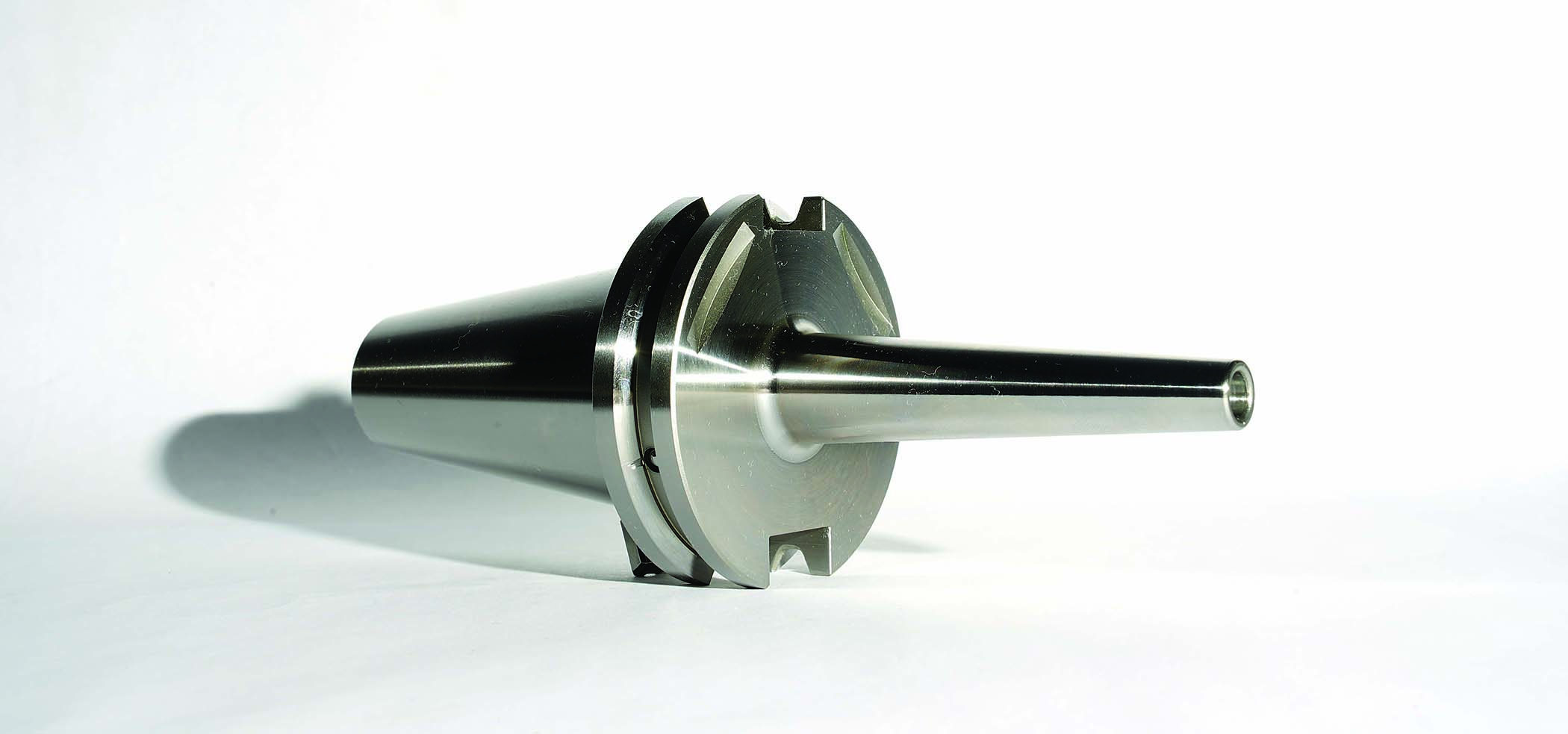
“We just quoted some tools to a customer who wanted a 16" long toolholder,” he said. “That's very long, but (with shrink-fit) we can make it all in one piece so it’s rigid and accurate.”
The long reach of shrink-fit tooling makes it a popular choice in the mold business, allowing manufacturers to get down into mold cavities to mill the required profiles. “The longer the reach, the more stress you get — and the easier it is to push tools off-center,” Hansen noted, adding that shrink-fit provides the firm grip necessary for accurate machining in those situations.
Another big advantage of shrink-fit is that it allows the use of very thin tools that can get into small spaces. Hansen reported that his firm produced a shrink-fit holder for a 1/8" diameter tool, with the holder itself measuring around 1/4" in diameter.
On the downside, Hansen pointed out that the creation of shrink-fit toolholders requires machines that range in price from around $15,000 all the way up to about $50,000. He also noted that capabilities of shrink-fit are not necessary for every toolholding application — good news for machining firms on a tight budget.
“There are a lot of small job shops that are not going to invest in this technology, and they probably don't need to,” he said.
Rigid and Cool
For turning processes in particular, recent toolholding developments of note include the introduction of the CoroCut 2 tool system by Sandvik Coromant in Mebane, North Carolina. Developed for parting and grooving applications, CoroCut 2 features double-edged inserts produced with patented technology, as well as both a screw clamp and a rigid rail seat design that work together to hold the inserts firmly in place. The rail is a mechanical interface that prevents micro movements of inserts during machining, explained Keith Brake, the company’s turning product manager for the Americas.
Another notable upgrade offered by CoroCut 2 is the addition of internal coolant ports. Taken together, the new features “make for pretty significant improvements for parting, grooving and shallow part-off,” Brake said.
Coolant-delivery features can be found in many of the latest toolholding products, according to Alan Miller, senior manager of engineering at BIG DAISHOWA Inc. in Hoffman Estates, Illinois. The company offers chucks with coolant-delivery capabilities that supplement flood and center-through coolant systems. “We're giving coolant that extra path to get exactly where it needs to be for improved tool life, better finishes, and all the other things that come with better coolant delivery,” Miller said.
One example is BIG DAISHOWA’s Jet Coolant hydraulic chuck toolholders, which direct coolant down the shaft of a tool to the tip. Miller described this product as a middle-size holder, in between larger standard hydraulic chucks that are mostly reliant on flood coolant and the company’s smaller Super Slim hydraulic chucks, whose walls aren’t thick enough to accommodate coolant ports.
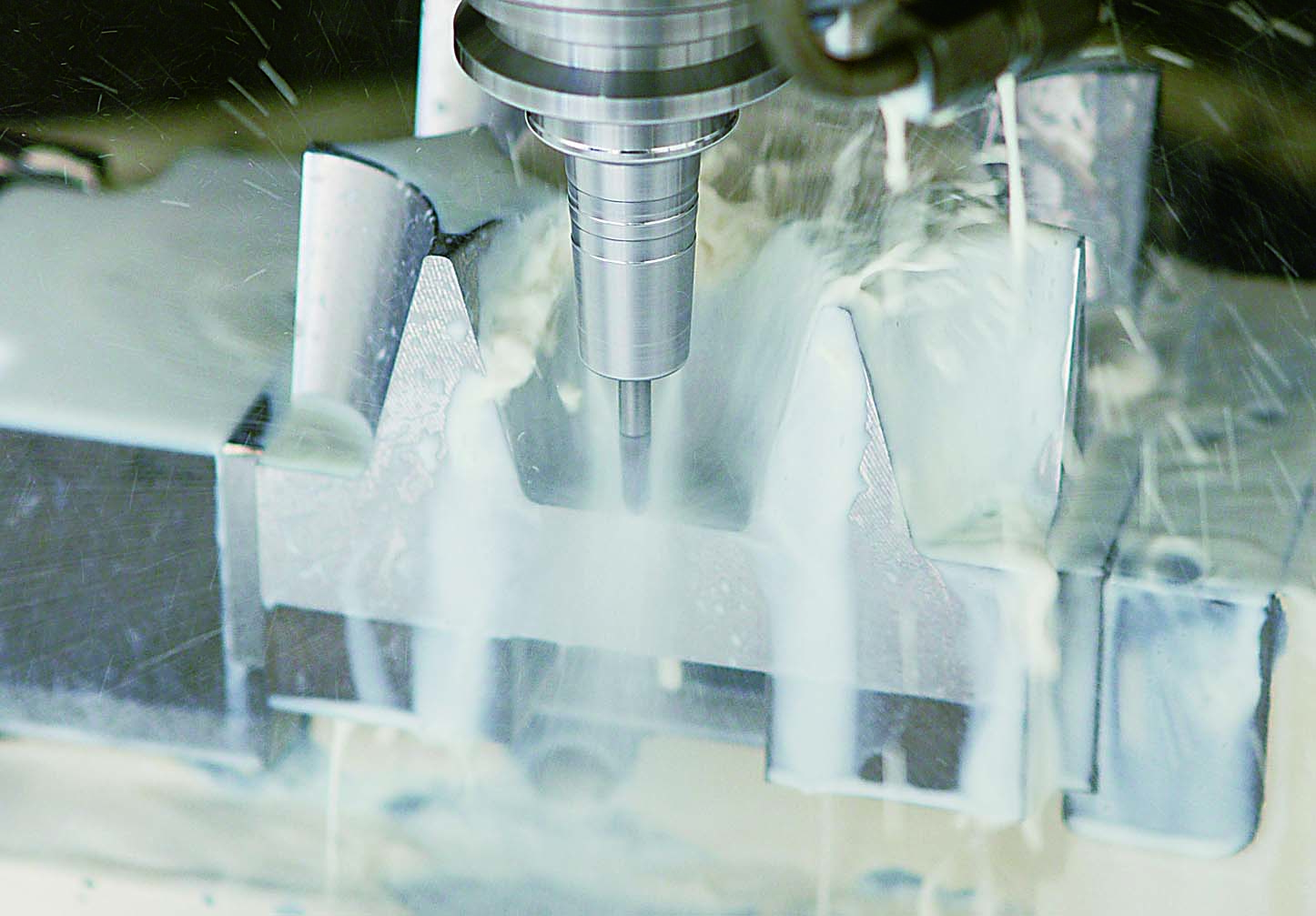
Similar capabilities come with two versions of the company’s Mega Micro product. This collet chuck features a notch-free nut design developed to prevent vibration and noise, while also offering good balance and concentricity. A sealed nut for directed coolant delivery is available with the product’s 6S and 8S body sizes.
According to Miller, effective coolant delivery isn’t simply a matter of adding some ports to a toolholder. “It is a patented thing,” he said, involving “compound angles that are designed to get the coolant to the right spot and at the right pressures and speeds.”
Swiss Solution
In the area of Swiss-type machining, a major development has been the introduction of quick-change tooling, according to Clay East, national product manager for parting, grooving and turning at Iscar Metals Inc. in Arlington, Texas. While competitors brought out their versions of quick-change Swiss toolholders, Iscar held back and instead gathered customer feedback on what they liked and disliked about the Swiss holders on the market. “We fed that information to our engineering group, which came up with a design that we think (addresses) all of the things that were problematic with [other] quick-change systems,” East noted.
The Iscar system, called NeoSwiss, consists of shanks that remain installed in a Swiss machine and a variety of insert-holding heads designed for easy installation and removal. Heads are available for a number of different machining operations, including turning, backturning, parting, grooving and threading.
In addition, the system allows X-axis and Y-axis heads to be used on the same shank. So if certain jobs require switching from X-axis to Y-axis machining, “you can do that without changing out the shanks because the Y-axis head fits onto the same shank as the X-axis head,” East said.
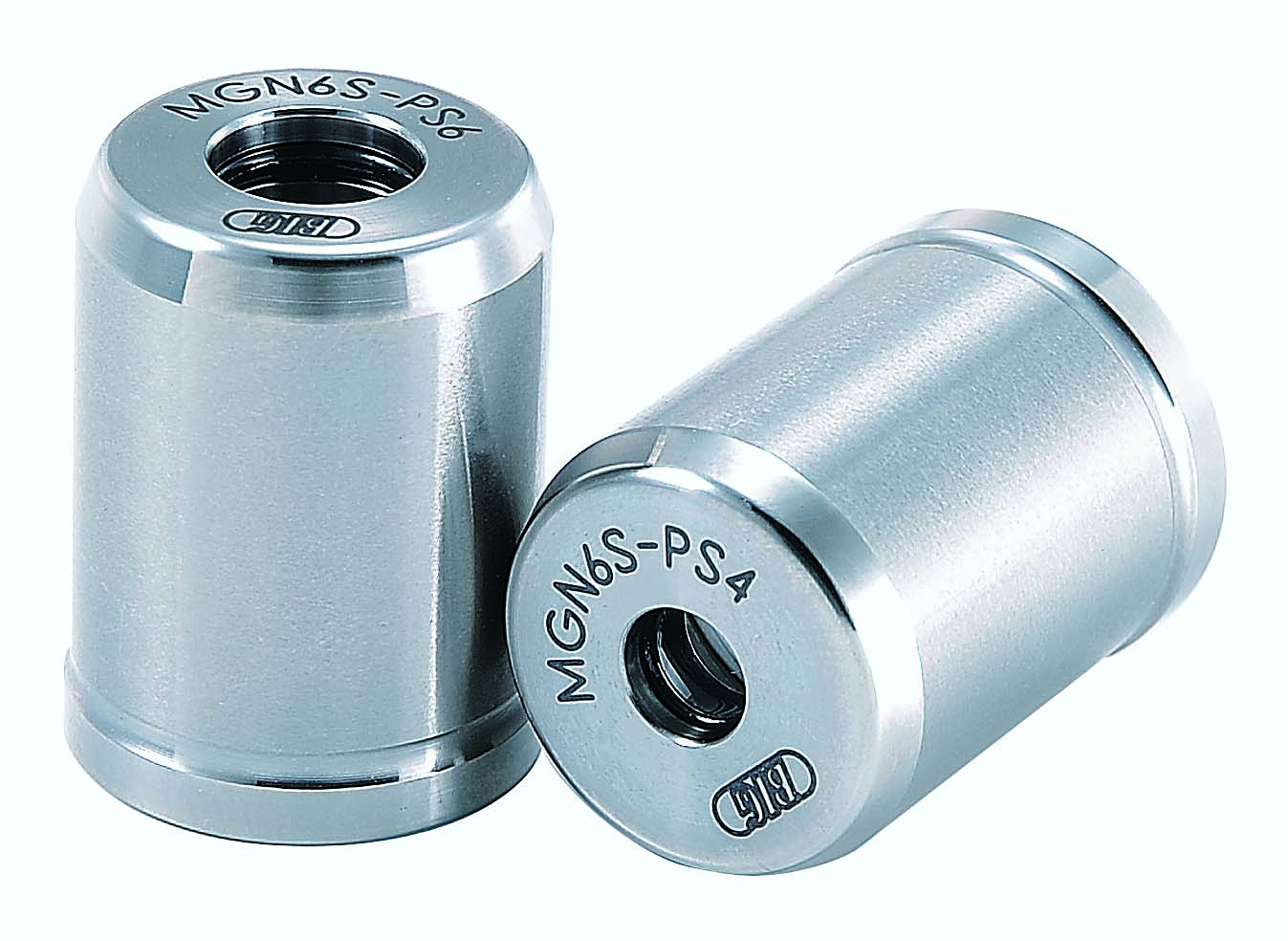
During the time Iscar spent gathering feedback from users of other Swiss toolholders, the two issues that came to the forefront were holder rigidity and repeatability. The NeoSwiss design addresses both issues with a unique rotary wedge clamping mechanism that is actuated by a sidelock screw. East describes the mechanism as a force multiplier. “Whatever force you’re using to turn the screw, it’s being multiplied many times to clamp the head down,” he said, adding that people he’s encountered in various settings report that they can “feel a big difference” in rigidity between NeoSwiss holders and others they’ve tried.
As for positioning repeatability offered by NeoSwiss, East said the number advertised by Iscar is ±0.0008", but that users can expect even better than that in real-world scenarios.
Despite the firmness of the connection between the tool shank and head, the two can be disengaged with a few turns of the sidelock screw, allowing heads to be changed in a matter of seconds. Though the cutting inserts themselves are held firmly in place by another screw clamping mechanism in the heads, East pointed out that this doesn’t impact the quick-change process because it is the heads that are being changed out, not the inserts.
Another NeoSwiss feature cited by East is the inclusion of Iscar’s Jet-Cut coolant-through capability. Instead of external coolant nozzles, the Jet-Cut system relies on two coolant ports that run through the heads, one exiting above the insert and the other below it. East described this as “sandwiching” the cutting zone with coolant to boost tool life and improve chip control. The company employs fluid dynamics software to determine the best paths for the ports and then uses a 3D printing process to manufacture the heads. In addition to the other advantages of this design, East noted that the elimination of coolant nozzles means that chips can’t wrap around those nozzles — a problem cited by customers when Iscar was gathering feedback about other Swiss holders.
All in all, East thinks the wait for the NeoSwiss was worth it for customers. “I believe that we have the best product on the market when it comes to Swiss quick-change systems.”
Contact Details
Contact Details
Contact Details
Related Glossary Terms
- chuck
chuck
Workholding device that affixes to a mill, lathe or drill-press spindle. It holds a tool or workpiece by one end, allowing it to be rotated. May also be fitted to the machine table to hold a workpiece. Two or more adjustable jaws actually hold the tool or part. May be actuated manually, pneumatically, hydraulically or electrically. See collet.
- collet
collet
Flexible-sided device that secures a tool or workpiece. Similar in function to a chuck, but can accommodate only a narrow size range. Typically provides greater gripping force and precision than a chuck. See chuck.
- coolant
coolant
Fluid that reduces temperature buildup at the tool/workpiece interface during machining. Normally takes the form of a liquid such as soluble or chemical mixtures (semisynthetic, synthetic) but can be pressurized air or other gas. Because of water’s ability to absorb great quantities of heat, it is widely used as a coolant and vehicle for various cutting compounds, with the water-to-compound ratio varying with the machining task. See cutting fluid; semisynthetic cutting fluid; soluble-oil cutting fluid; synthetic cutting fluid.
- endmill
endmill
Milling cutter held by its shank that cuts on its periphery and, if so configured, on its free end. Takes a variety of shapes (single- and double-end, roughing, ballnose and cup-end) and sizes (stub, medium, long and extra-long). Also comes with differing numbers of flutes.
- grooving
grooving
Machining grooves and shallow channels. Example: grooving ball-bearing raceways. Typically performed by tools that are capable of light cuts at high feed rates. Imparts high-quality finish.
- milling machine ( mill)
milling machine ( mill)
Runs endmills and arbor-mounted milling cutters. Features include a head with a spindle that drives the cutters; a column, knee and table that provide motion in the three Cartesian axes; and a base that supports the components and houses the cutting-fluid pump and reservoir. The work is mounted on the table and fed into the rotating cutter or endmill to accomplish the milling steps; vertical milling machines also feed endmills into the work by means of a spindle-mounted quill. Models range from small manual machines to big bed-type and duplex mills. All take one of three basic forms: vertical, horizontal or convertible horizontal/vertical. Vertical machines may be knee-type (the table is mounted on a knee that can be elevated) or bed-type (the table is securely supported and only moves horizontally). In general, horizontal machines are bigger and more powerful, while vertical machines are lighter but more versatile and easier to set up and operate.
- parting
parting
When used in lathe or screw-machine operations, this process separates a completed part from chuck-held or collet-fed stock by means of a very narrow, flat-end cutting, or parting, tool.
- shank
shank
Main body of a tool; the portion of a drill or similar end-held tool that fits into a collet, chuck or similar mounting device.
- threading
threading
Process of both external (e.g., thread milling) and internal (e.g., tapping, thread milling) cutting, turning and rolling of threads into particular material. Standardized specifications are available to determine the desired results of the threading process. Numerous thread-series designations are written for specific applications. Threading often is performed on a lathe. Specifications such as thread height are critical in determining the strength of the threads. The material used is taken into consideration in determining the expected results of any particular application for that threaded piece. In external threading, a calculated depth is required as well as a particular angle to the cut. To perform internal threading, the exact diameter to bore the hole is critical before threading. The threads are distinguished from one another by the amount of tolerance and/or allowance that is specified. See turning.
- toolholder
toolholder
Secures a cutting tool during a machining operation. Basic types include block, cartridge, chuck, collet, fixed, modular, quick-change and rotating.
- turning
turning
Workpiece is held in a chuck, mounted on a face plate or secured between centers and rotated while a cutting tool, normally a single-point tool, is fed into it along its periphery or across its end or face. Takes the form of straight turning (cutting along the periphery of the workpiece); taper turning (creating a taper); step turning (turning different-size diameters on the same work); chamfering (beveling an edge or shoulder); facing (cutting on an end); turning threads (usually external but can be internal); roughing (high-volume metal removal); and finishing (final light cuts). Performed on lathes, turning centers, chucking machines, automatic screw machines and similar machines.



